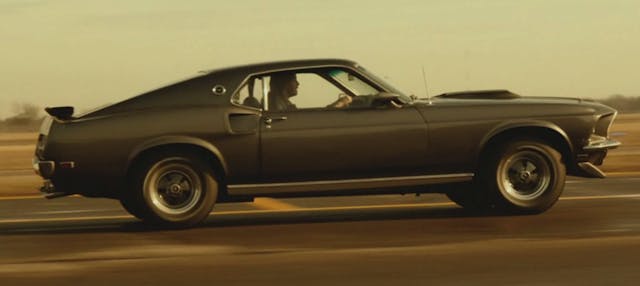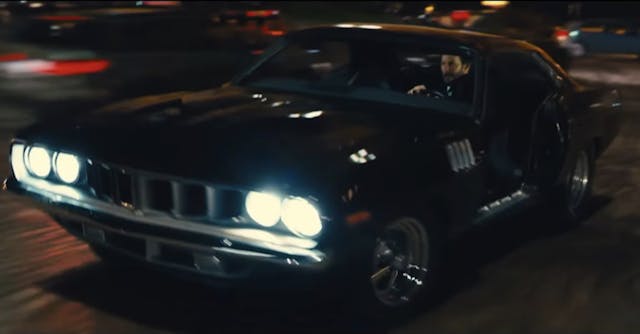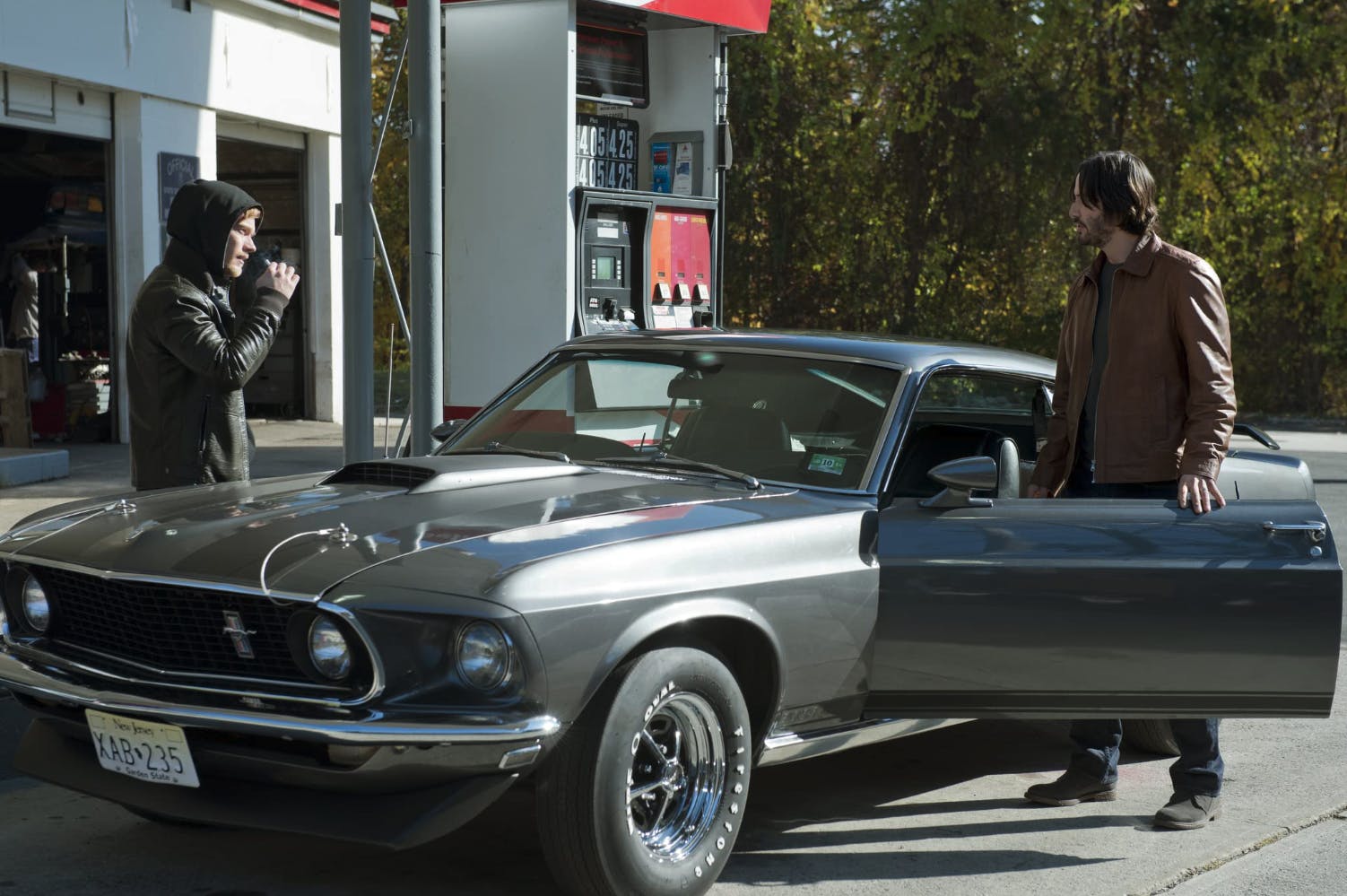Media | Articles
Cars of John Wick: The Boogeyman and American muscle
John Wick is a rarity in the modern movie landscape. Though it is a successful Hollywood franchise, there was no prior source media for the 2014 film that kicked off this action-film craze. The tale follows Keanu Reeves’ titular character, a legendary retired hitman who, while mourning the loss of his wife to cancer, suffers considerable indignity: The ignorant son of a Russian gangster kills his Beagle puppy, a gift from his late love. Adding insult to injury, the perpetrator also steals his car.
This premise isn’t the point, of course. In many ways this is a variation on the classic revenge flick trope, in which the protagonist sets out on a bloody path of vengeance. The movie won fans with its mix of beautifully choreography, over-the-top sequences, and Reeves’ dedication to tactical detail and gruff demeanor. He’s called “Baba Yaga,” the Russian folk version of the Boogeyman, for a reason. (Though Wick’s house does not, to our knowledge, grown gigantic chicken legs and walk around.)
At this moment, John Wick: Chapter 4 sits in the second slot of the domestic box office. That has us revisiting some of our favorite moments from the series, particularly Wick’s fondness for hot American metal. Check out John Wick’s impeccable taste in cars:
Mustang Boss 429

The main plot of the 2014 original film kicks off with Wick’s chance gas station meeting with Iosef Tarasov, played by actor Alfie Allen. Tarasov, emboldened by his status as the child of a Russian mob boss, takes a shine to Wick’s car—what purports to be a 1969 Mustang Boss 429. (Experts will recognize some errors in the bodywork, a lack of badging, and an automatic transmission, but for the purposes of a suspension-of-disbelief action flick, it checks the box.) Tarasov plays up the tough guy act to intimidate Wick into selling, to no avail.
Instead, the problem child assembles a crew that marches on Wick’s home, kills his dog, and steals his Boss. Little did they know, they poked the wrong bear.
Marketplace
Buy and sell classics with confidence

If it were real, Wick’s Boss 429 would represent one of just 857 that were pressed in the first of two years of production to homologate Ford’s 7.0-liter NASCAR motor. These monster ponies represented the high-water mark of non-Shelby ‘Stangs and were, according to many, underrated at 375 hp and 450 lb-ft of torque.
Chevelle SS 396

While visiting a performance shop belonging to Wick’s friend, we catch a glimpse of some tasty rides, including a Porsche 993-gen GT2 and a Gulf-livery Ford GT40. There, Wick takes delivery of his replacement ride, a 1970 Chevelle SS 396.
The Chevelle sees minimal screen time in the original film, receiving a stay of execution when Wick opts instead for a modern 5.7-liter Dodge Charger for his final assault on the Russians. But there is something fitting and sinister about that green-painted Chevelle—a custom hue that is too dark to be the factory Forest Green—rumbling through Manhattan that leaves an impression.
As with any car in this franchise, it’s best not to get too attached. The SS 396 becomes the tank that Wick rides to battle to recover his (also ill-fated) Mustang in the stunning opening sequence of Chapter 2.

Rolls-Royce Ghost (Series II)

After destroying some classics, John takes a well-advised break old metal and, for the rest of Chapter 2 he’s mostly seen on foot, riding public transit, and, at the very end, behind the coach door of a Series II Rolls Royce Ghost. While the Ghost is too new for collector value data, it might be the most suitable ride for the Boogeyman—at least one that looks dashing in a suit.
Range Rover (LP)

Car-wise, John Wick: Chapter 3—Parabellum is the low point of an otherwise excellent quadrilogy, but it isn’t without its vehicular merits. It also introduces the audience to Halle Berry and her pair of Belgian Malinois attack dogs to make up for its lack of large-bore V-8s.
Around the halfway point, Wick, Berry’s character, and the show-stealing pups escape into the desert aboard a second-generation Range Rover, the film’s only real automotive star. According to the wonderful Internet Movie Car Database, it is a ’95 model. These Brit rigs are treated as collectibles primarily among the top-condition examples (roughly $54,000–$68,000), but the Rangie in the movie looks to be more of a driver-condition beast.
1971 Plymouth Cuda

Baba Yaga returns to form in Chapter 4 at the helm of a menacing ’71 Cuda. Unfortunately, John Wick does John Wick things to the poor Plymouth. The critical Cuda scene takes place at night, so it isn’t immediately clear what’s lurking under the hood, but given the amount of criminally-sourced gold coins at his disposal, his track record for good taste, and the magic of prop acting, we’re wagering it’s the pricey 440 Six Pack or Hemi.
With the continual success of the Wick franchise, Reeves no doubt would hit another home run in a fifth installment. Maybe he’ll trash an AMX to round out his game of classic muscle-car BINGO (GM, Ford, Mopar, AMC). As it stands, in four outings, the Boogeyman has amassed an on-screen car resume to rival some of the greatest silver-screen stars.
***
Check out the Hagerty Media homepage so you don’t miss a single story, or better yet, bookmark it. To get our best stories delivered right to your inbox, subscribe to our newsletters.
















Bond typically drives English Astons, Wick chooses American Iron – fitting, I suppose. But (as the author points out), it’s a bit disappointing that the script researchers didn’t make better attempts at accurately presenting the cars as originals. Wick strikes me as being the type who would only accept the real thing, not a clone, and could certainly pay for it. Of course, my own standards are quite a bit lower – I’m even proud of my clone – but then again, I don’t look dashing in a suit, either! 😛
The Mustang annoyed me. If one is to believe that the character owns a real Boss 429 Mustang, it is strange that a guy who clearly needs a car that performs well would choose to run original-style bias tires that handle poorly instead of at minimum installing radials. If he truly cared about an original appearance to sacrifice drivability (given his line of work), then he wouldn’t have painted racing stripes over the top of the car. Either make it look correct, or make it custom.
He owned it during his married life, after retiring from the life where he was likely to need performance in matters of life and death.
The Muscle Cars of John Wick have been a highlight. Sure they may not be 100% correct but I don’t care. What hurts is watching them get all bashed up.
then i guess we can be grateful JW isn’t bashing up the real-deal muscle machines, eh?
If you look closely in John Wick Chapter 4, you’ll notice the Cuda isn’t just one car. There are several shots that catch the tail panel of the Cuda with ‘72-74 “round” taillights…oops!
I get kick out of movie mistakes. Like seeing actors driving cars in a movie with the traffic in the background and the gear shift is in Park! Or in one movie the actor is driving a Lincoln, but when it goes over a cliff it is a Ford. The military mistakes, officers wearing enlisted men’s hats and being saluted by MP’s. Like they would never notice that! Sticks out like a sore thumb to a veteran!
The Boss was a 302. The 429 was a SCJ. Quit hiring soy boys to write your articles and find someone who not only knows how to spell carburetor, but also knows how to rebuild one.
In the movie the Mustang was referred to as a Boss 429. The 1969 Boss 302 was slightly different in appearance from it’s other sportsroof siblings in that it didn’t have the faux air scoops in the rear fenders. It would have made more sense to have called it a 1969 Mach 1 with the 428 CJ or SCJ since it was equipped with an automatic. ( 429 CJ/SCJ were not available in a Mustang till 1971) Hollywood directors/producers/actors rarely know much about cars(McQueen and Garner being the exceptions)
72-74 I saw a 71 satellite being driven in filming.
“John Wick is NOT the Boogeyman. He’s the guy you send to kill the f*ck*ng Boogeyman.”
~Vito Tarasov
Wick never says that its a Boss 429, the punk Russian kid calls it that and Wick just nods his head and agrees, like he just wants the conversation done and the kid to go away. Its a ’69 Mach 1 with a repaint and the stripe moved down to the rockers instead of being mid body like the original. The hood scoop isn’t the wide scoop from the Boss 429 or the shaker from the 428 ram air, its the more common scoop that was optional with the 351, 390, and 428. Here is a good reference site for anyone interested https://www.oldcarbrochures.com/static/NA/Ford_%20Mustang/1969_Ford_Mustang/dirindex.html